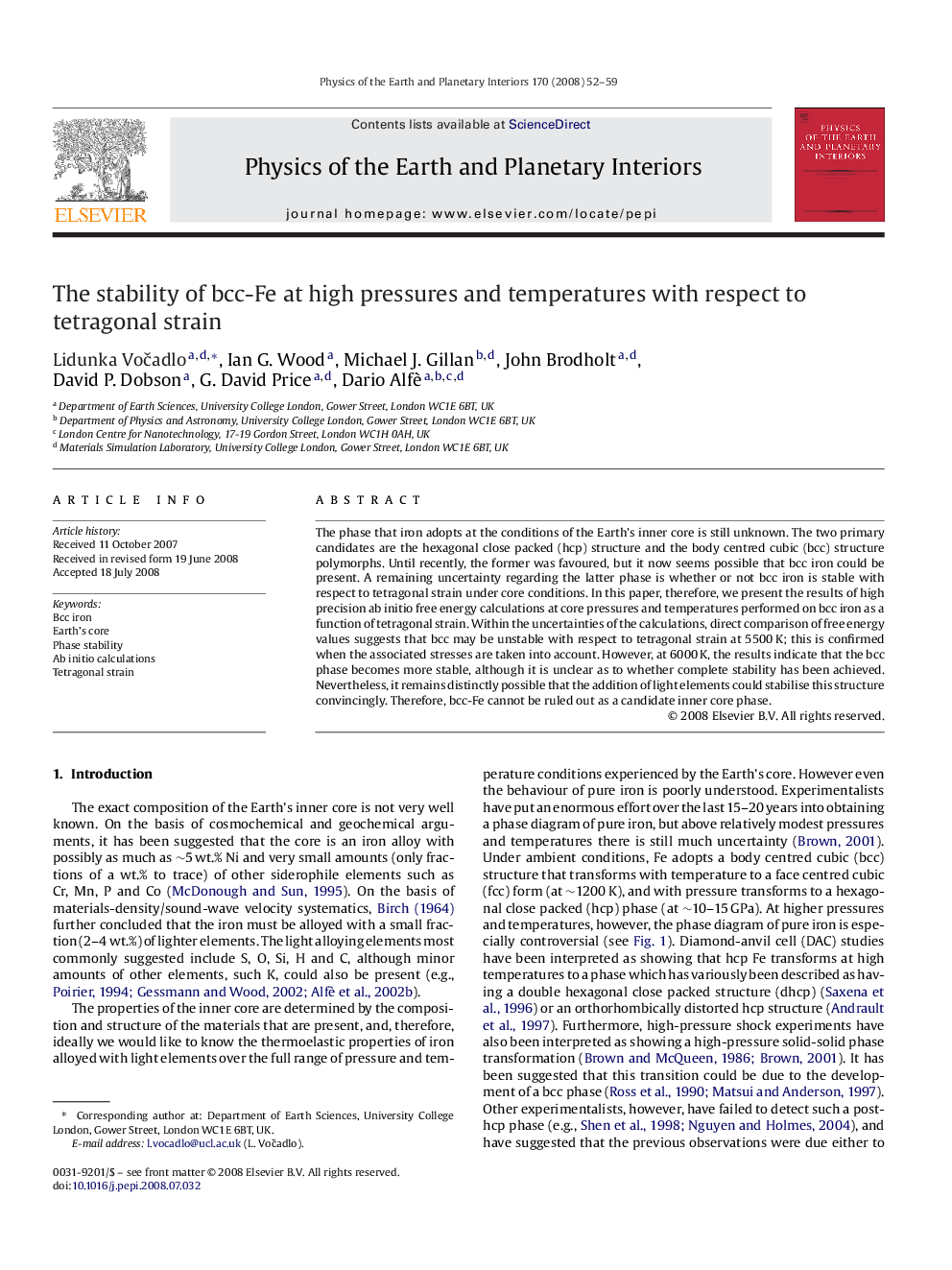| Article ID | Journal | Published Year | Pages | File Type |
|---|---|---|---|---|
| 4742411 | Physics of the Earth and Planetary Interiors | 2008 | 8 Pages |
The phase that iron adopts at the conditions of the Earth's inner core is still unknown. The two primary candidates are the hexagonal close packed (hcp) structure and the body centred cubic (bcc) structure polymorphs. Until recently, the former was favoured, but it now seems possible that bcc iron could be present. A remaining uncertainty regarding the latter phase is whether or not bcc iron is stable with respect to tetragonal strain under core conditions. In this paper, therefore, we present the results of high precision ab initio free energy calculations at core pressures and temperatures performed on bcc iron as a function of tetragonal strain. Within the uncertainties of the calculations, direct comparison of free energy values suggests that bcc may be unstable with respect to tetragonal strain at 5500 K; this is confirmed when the associated stresses are taken into account. However, at 6000 K, the results indicate that the bcc phase becomes more stable, although it is unclear as to whether complete stability has been achieved. Nevertheless, it remains distinctly possible that the addition of light elements could stabilise this structure convincingly. Therefore, bcc-Fe cannot be ruled out as a candidate inner core phase.
